MOLIVDOSKEPASTI MONASTERY-KONITSA
Tuesday, August 11, 2009
 Konitsa, Epirus, Greece
Konitsa, Epirus, Greece
THE MONASTERY OF MOLIVDOSKEPASTI
Molivdoskepasti village is about 15 km away from Konitsa .
250m from the Greek-Albanian borders, next to the quiet Aoos, the monastery of Molivdoskepasti imposes its lively presence. Today Molivdoskepasti is a peaceful and beautiful border village, that history has left its own tracks.
It is an active monastery owes its name to the lead roof which has now been replaced by slates. (Molivdos means lead)
The history of the monastery goes back in the early Middle Ages. According to tradition, its founder was the Byzantine emperor Constantine from Pogoni and based on an inscription in the interior of its nave, it dates back to the 7th century.
The construction of the nave itself uncovers at least 3 phases: the small three-cornered space with the dome (11th century) the cross-roofed hall from the 14th century, and finally the open narthex which is separated from the main church by a wooden door carved with representations from the Bible, an exquisite symbol of local art .
The stone remnants from the 14th centrury onwards. The hagiographies are from the 16th century.
The monks there were very busy cleaning and preparing the Monastery for the big day – the 15th of August which is a Great Religious Day for all Christians.
Many women from the village, but also from other places were busy also, helping the monks there.
We were offered (lukumia) delights and cold water.
A plastic bag full of freshly cut tomatos were given to the driver of the coach by a monk, for any one of us who wished to have one.
Other Entries
-
37ZOODOCHO PIGI MONASTERY IN SAMOS
Jul 2814 days prior VATHI SAMOS, Greecephoto_camera10videocam 0comment 0
VATHI SAMOS, Greecephoto_camera10videocam 0comment 0 -
38EPHESUS
Jul 2814 days prior Kusadasi, Turkeyphoto_camera96videocam 0comment 0
Kusadasi, Turkeyphoto_camera96videocam 0comment 0 -
39THE ANCIENT RUINS AT IREO - SAMOS
Jul 2913 days prior IRAIO, Greecephoto_camera18videocam 0comment 0
IRAIO, Greecephoto_camera18videocam 0comment 0 -
40MITILINII MUSEUM (The Island of Lesvos)
Jul 2913 days prior MITILINII, Greecephoto_camera56videocam 0comment 0
MITILINII, Greecephoto_camera56videocam 0comment 0 -
41EUPALINOS TUNNEL-PYTHAGORIO
Jul 3012 days prior PYTHAGORIO, Greecephoto_camera17videocam 0comment 0
PYTHAGORIO, Greecephoto_camera17videocam 0comment 0 -
42PANAGIA SPILIANI (SAMOS )
Jul 3012 days prior PYTHAGORIO, Greecephoto_camera19videocam 0comment 0
PYTHAGORIO, Greecephoto_camera19videocam 0comment 0 -
43THE CITY OF IOANNINA
Aug 092 days prior Ioannina, Greecephoto_camera18videocam 0comment 0
Ioannina, Greecephoto_camera18videocam 0comment 0 -
44AMFILOCHIA OUR FIRST STOP
Aug 092 days prior AMFILOCHIA, Greecephoto_camera9videocam 0comment 0
AMFILOCHIA, Greecephoto_camera9videocam 0comment 0 -
45THE VRELLIS MUSEUM AT IOANNINA
Aug 092 days prior Ioannina, Greecephoto_camera9videocam 0comment 0
Ioannina, Greecephoto_camera9videocam 0comment 0 -
46TSEPELOVO -EPIRUS MOUNTAINS - IOANNINA
Aug 101 day prior TSEPELOVO, Greecephoto_camera43videocam 0comment 0
TSEPELOVO, Greecephoto_camera43videocam 0comment 0 -
47MONODENDRI STONE BUILT HOUSES
Aug 101 day prior MONODENDRI, Greecephoto_camera16videocam 0comment 0
MONODENDRI, Greecephoto_camera16videocam 0comment 0 -
48VIKOS GORGE -MONODENDRI (IOANNINA)
Aug 101 day prior MONODENDRI, Greecephoto_camera31videocam 0comment 2
MONODENDRI, Greecephoto_camera31videocam 0comment 2 -
49MEETING OUR FRIENDS IN IOANNINA
Aug 11earlier that day Ioánnina, Greecephoto_camera3videocam 0comment 0
Ioánnina, Greecephoto_camera3videocam 0comment 0 -
50FROGS LEGS DISH
Aug 11earlier that day Ioánnina, Greecephoto_camera5videocam 0comment 0
Ioánnina, Greecephoto_camera5videocam 0comment 0 -
51(NISSI)-THE ISLAND OF IOANNINA- video
Aug 11earlier that day Ioannina , Greecephoto_camera21videocam 1comment 0
Ioannina , Greecephoto_camera21videocam 1comment 0 -
52STALACTITES PERAMA CAVE IN IOANNINA
Aug 11earlier that day IOANNINA , Greecephoto_camera43videocam 0comment 1
IOANNINA , Greecephoto_camera43videocam 0comment 1 -
53KONITSA CITY NORTH GREECE
Aug 11earlier that day Konitsa, Greecephoto_camera11videocam 0comment 0
Konitsa, Greecephoto_camera11videocam 0comment 0 -
54MOLIVDOSKEPASTI MONASTERY-KONITSA
Aug 11 Konitsa, Greecephoto_camera23videocam 0comment 1
Konitsa, Greecephoto_camera23videocam 0comment 1 -
55THE VILLAGE OF METSOVO - (Greece)
Aug 121 day later Metsovo, Greecephoto_camera44videocam 0comment 2
Metsovo, Greecephoto_camera44videocam 0comment 2 -
56KALAMBAKA AND METEORA (GREECE)
Aug 121 day later KALABAKA, Greecephoto_camera10videocam 0comment 0
KALABAKA, Greecephoto_camera10videocam 0comment 0 -
57TOSITSA MUSEUM - METSOVO - GREECE
Aug 121 day later METSOVO , Greecephoto_camera88videocam 0comment 1
METSOVO , Greecephoto_camera88videocam 0comment 1 -
58LONDON -SAINT ALBAN'S
Aug 176 days later London, United Kingdomphoto_camera10videocam 0comment 3
London, United Kingdomphoto_camera10videocam 0comment 3 -
59FINCHLEY -COMFORT HOTEL
Aug 176 days later London, United Kingdomphoto_camera0videocam 0comment 0
London, United Kingdomphoto_camera0videocam 0comment 0 -
60ANTIQUES MARKET-OXFORD STREET
Aug 187 days later London, United Kingdomphoto_camera13videocam 0comment 1
London, United Kingdomphoto_camera13videocam 0comment 1 -
61COVENT GARDEN MARKET
Aug 187 days later London, United Kingdomphoto_camera20videocam 0comment 1
London, United Kingdomphoto_camera20videocam 0comment 1 -
62LONDON SIGHTSEEING
Aug 187 days later London, United Kingdomphoto_camera95videocam 0comment 3
London, United Kingdomphoto_camera95videocam 0comment 3 -
63LAST MOMENTS IN EDGWARE
Aug 198 days later Edgware, United Kingdomphoto_camera9videocam 0comment 0
Edgware, United Kingdomphoto_camera9videocam 0comment 0 -
64MADRID - Our Sightseeing
Aug 209 days later Madrid, Spain and Canary Islandsphoto_camera102videocam 0comment 0
Madrid, Spain and Canary Islandsphoto_camera102videocam 0comment 0 -
65MERCADO DE SAN MIGUEL (Madrid)
Aug 209 days later Madrid, Spain and Canary Islandsphoto_camera13videocam 0comment 0
Madrid, Spain and Canary Islandsphoto_camera13videocam 0comment 0 -
66MURALTO HOTEL-APPARTAMENTOS
Aug 2110 days later Madrid, Spain and Canary Islandsphoto_camera0videocam 0comment 0
Madrid, Spain and Canary Islandsphoto_camera0videocam 0comment 0 -
67WALKING IN THE OLD CITY OF TOLEDO
Aug 2211 days later Toledo, Spain and Canary Islandsphoto_camera72videocam 0comment 5
Toledo, Spain and Canary Islandsphoto_camera72videocam 0comment 5 -
68TOLEDO SIGHTSEEING TOUR
Aug 2211 days later Toledo, Spain and Canary Islandsphoto_camera17videocam 0comment 0
Toledo, Spain and Canary Islandsphoto_camera17videocam 0comment 0 -
69TOLEDO IS UNBELIEVABLY PICTURESQUE
Aug 2211 days later TOLEDO , United Statesphoto_camera17videocam 0comment 0
TOLEDO , United Statesphoto_camera17videocam 0comment 0 -
70FUERTEVENTURA -(CAMPANARIO) IN CORRALEJO
Aug 2312 days later Corralejo, Spain and Canary Islandsphoto_camera34videocam 0comment 0
Corralejo, Spain and Canary Islandsphoto_camera34videocam 0comment 0 -
71A STROLL IN CORRALEJO-FUERTEVENTURA
Aug 2312 days later Corralejo, Spain and Canary Islandsphoto_camera16videocam 0comment 0
Corralejo, Spain and Canary Islandsphoto_camera16videocam 0comment 0 -
72AVENIDA GRANDES PLAYAS BEACH- FUERTEVENTURA
Aug 2413 days later Corralejo, Spain and Canary Islandsphoto_camera14videocam 0comment 0
Corralejo, Spain and Canary Islandsphoto_camera14videocam 0comment 0
Comments
2025-05-22
Comment code: Ask author if the code is blank

 Konitsa, Epirus, Greece
Konitsa, Epirus, Greece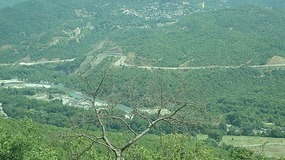
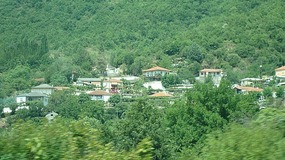


















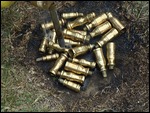
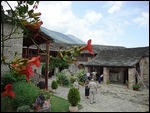
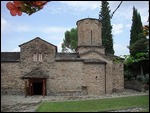
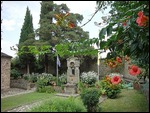
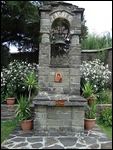
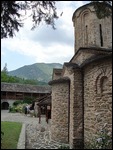

littlekate
2009-08-22
Wow!
Very beautiful and very ancient. You would not find anything so old in Russia. The icon of Virgin Mary looks absolutely the same as the icons in our churches - so similar, even grapes in the casings ornaments is very typical for Russia - borrowed from Greece, I think, together with the belief. Only the candle supporters are never cleaned by heat. Here they spread some oil on them, so the wax would not stick to them.